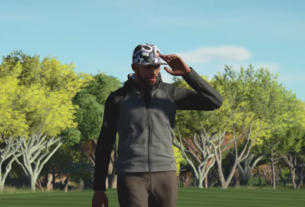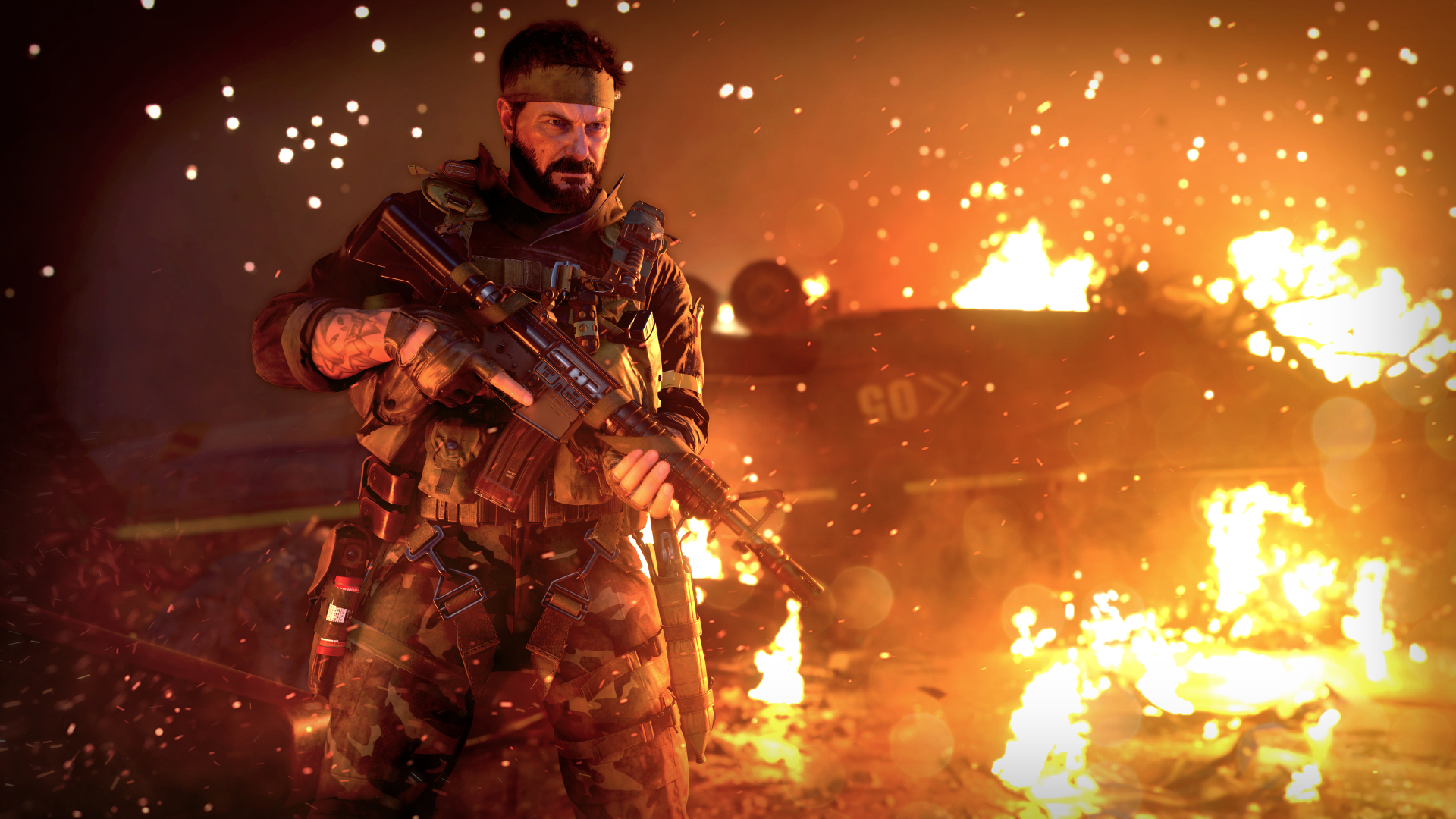
What is it? A Cold War-era Call of Duty
Expect to pay $60
Developer Raven Software, Treyarch, Beenox
Publisher Activision
Reviewed on RTX 2060, Ryzen 5 2600 3.4GHz, 16GB RAM
Multiplayer? 12-40 players
Out November 13
Link callofduty.com/blackopscoldwar
Talking to friends and colleagues about a new Call of Duty is never the same as our banter about other games. As an annual series defined by incremental changes to a formula, nitpicking is ingrained in the discourse. That’s certainly the case for Call of Duty: Black Ops – Cold War, a good game that falls short of its predecessor. Instead of being undermined by unforgivable sins, it’s an accumulation of smaller flaws, like how guns feel or maps flow.
Despite welcome adjustments to Create-a-Class and a fun (if brief) campaign, Call of Duty has been a lot better before. In fact, a better Call of Duty game released this year—the free-to-play battle royale Call of Duty: Warzone.
Warzone’s longevity makes Cold War a harder sell. There is no longer a single de facto CoD. Starting in December, Activision is unifying progression across Warzone and Cold War with shared ranks, weapons, battle passes, and cosmetics. A rank gained in one will automatically carry into the other. Both games have prominent main menu buttons that launch into the other, seamlessly bringing your party along as well. By merging into a strange FPS homunculus, Call of Duty is, in its own way, evolving into a single service game hub with Warzone at its center.
The tech that binds the two together is impressive, but it’s not a steady transition for these wildly divergent shooters. Under different developers and engines, guns that appear in both games like the M4 and MP5 have mismatched ballistics and recoil patterns. Attachments that look nearly identical don’t alter the same stats. Casually switching to Cold War after a few Warzone matches is like jumping from a bike to a skateboard—same idea, but different in every way that matters. It’s no secret which of these competing philosophies will leave a greater legacy. Activision is betting the series’ future on Warzone, and for good reason. Cold War is fine, but it’s a distraction from the CoD I’ll still be playing a year from now.
Troublesome tweaks
Call of Duty is, in its own way, evolving into a single service game hub with Warzone at its center.
One of Cold War’s biggest problems is the time period itself. The ’80s setting works in recognizable guns like the MP5 and M4, but the impact on attachments is noticeable. Since red dot and holographic sights were still early tech at the time, there are far fewer long-range options with clear laser sights. The omission of other offbeat modifiers like underbarrel launchers, weapon perks, and hybrid sights really stings. Modern Warfare’s weapons were malleable blueprints. In Cold War, I’m tweaking sliders without seeing or feeling a big result. The sense of discovery and experimentation is diminished.
Besides a few neat ’80s-era map destinations like Miami or Moscow, the Cold War setting just holds multiplayer back. The weapon selection is a strange middle ground between high-tech and historic that satisfies neither extreme. Is it too much to ask for a humble AK-47 with an underbarrel shotgun and variable thermal scope? Yes, because ’80s.
Treyarch’s latest take on Create-a-Class does come with a few improvements. Wildcards, class modifiers seen in past Black Ops games, let you bend the rules in some fun ways. I enjoy the absurdity of Gunfighter, which lets you stick eight attachments to a gun instead of the usual five, though I suspect most players will stick to the Perk Greed wildcard to score an extra three perks for free. I think this is partly why perks are less impactful this time around. Perks in the first two slots are minor bonuses to grenade resistances and cooldowns. All of the stealth-based perks like Ghost that I usually use to avoid UAVs are relegated to the third slot. The need for Ghost or Cold Blooded wastes a slot I’d rather use on a fun perk that lets me shoot while sprinting.
This is a roundabout way of saying that killstreaks are still around and still unfortunately prominent. Cold War switches back to the Treyarch-style of scorestreaks that account for all points earned, not just kills. Except now, progress toward streaks isn’t reset upon death (making “streak” a total misnomer). Going on a streak will help earn them faster, but the new system allows even a simpleton like me to carpet bomb the map with napalm at least once per match. If that sounds like a recipe for more chaos than ever, you’d be correct. Across four different matches, I’ve shot down choppers just to watch another fly into the airspace ten seconds later, and another after that. Thanks, I hate it!
Ballistics are also a major step back in Cold War. Call of Duty games have always struggled with low tickrate servers that let you get shot after you’ve already made it behind cover, but this is the worst it has felt in years. Hit detection is sluggish, taking anywhere between 5-7 frames after shooting to register a hit in Cold War (Modern Warfare had a consistent 3-frame delay in my testing). It’s hard to tell if this is a consequence of the servers or simply a lower bullet velocity.
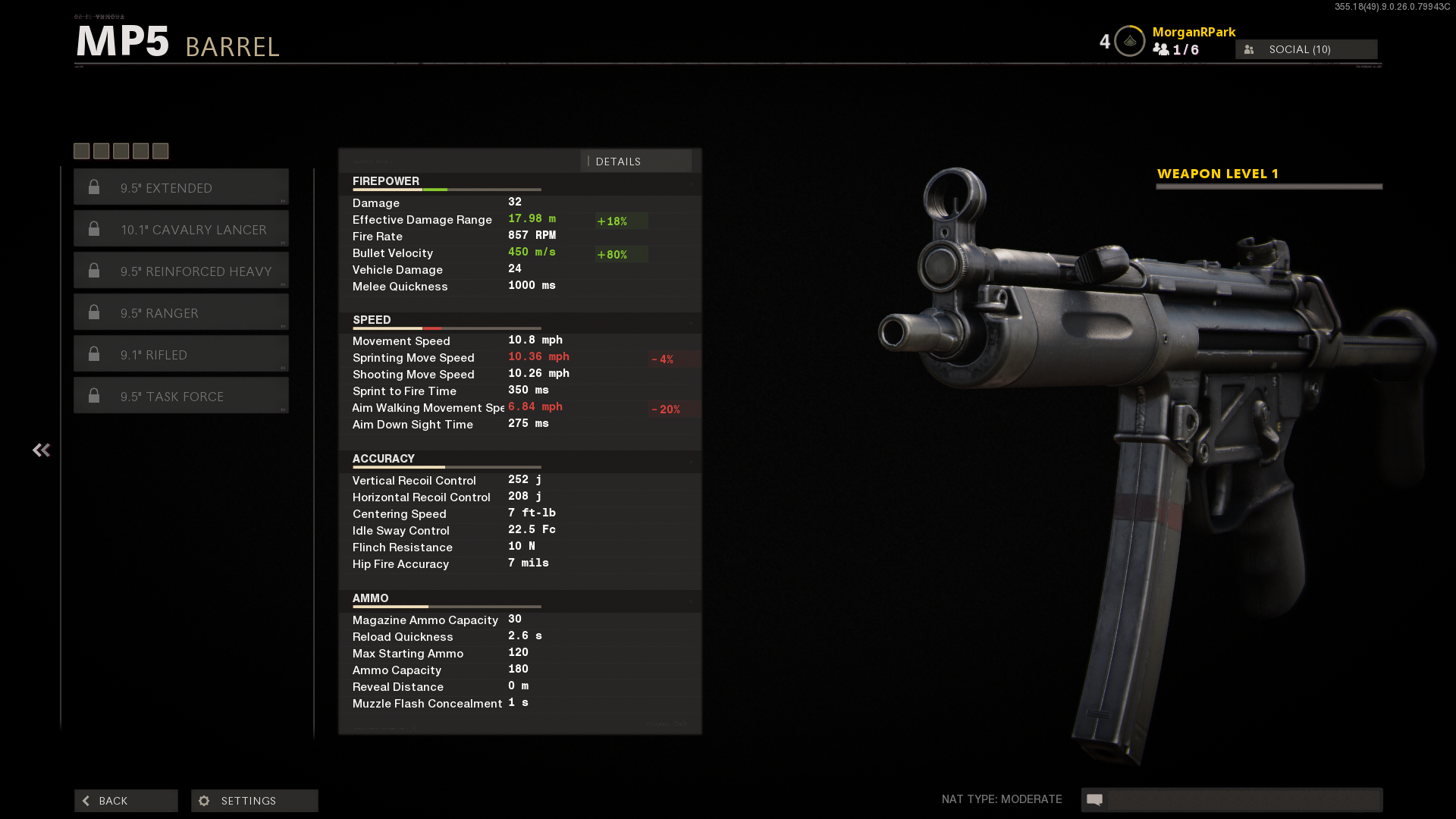
Hit detection is only half the reason Cold War’s guns aren’t very fun to shoot. Modern Warfare (and Warzone, by extension) set a high bar with its bassy, abrasive sound effects. LMGs scream louder than the teammates in your ear, while near-miss shots snap the sound barrier like a rubber band. In comparison, Cold War’s guns sound like plastic knockoffs. No matter what muzzle I slap on the thing, my AK-47 still rattles like a hollow aerosol can with every shot. Even the bassy XM4 has the same tinny quality that’s been around since the first Black Ops. Informational sounds like bullet thuds are less satisfying, too. Where MW’s bullets are supersonic drill bits that gnaw through kevlar, Cold War’s are softer thuds.
In comparison, Cold War’s guns sound like plastic knockoffs.
Most modes that you’d expect like Team Deathmatch and Domination are here unchanged and still a good time. I’ve spent most of my time in the classics out of habit, but also because Treyarch’s new offerings are a series of awkward misfires.
VIP Escort is a round-based, single-life mode where one team must escort a VIP outfitted with a pistol to an extraction chopper while enemies hunt them down. I know from other shooters that his kind of mode can be fun, but only with the kind of cooperative team that rarely comes together in random matchmaking. I spent every match praying the VIP wouldn’t run straight into a hail of bullets and end the round in seconds.
I much prefer last year’s Cyber Attack, a twist on Search and Destroy where both teams can plant the bomb and revive teammates. It has a great tug-of-war dynamic where the advantage often shifted multiple times before anyone came out on top. VIP isn’t a worthy replacement, but at least standard Search and Destroy remains. There’s also Dirty Bomb, a squad-based, 40-player turf war on big maps. It’s sort of like Ground War with the free-for-all squad rules of battle royale. And like Ground War, it’s a disorganized mess that I likely won’t come back to.
Surprisingly, I will be coming back to Zombies. I’ve not been a fan of how convoluted the mode became through the years, so I’m glad that Cold War gets back to basics. The clutter of power-ups has been condensed to a few Perk machines scattered throughout the map and ultimate-like abilities that can be permanently upgraded out-of-game. Less time spent saving up for perks gives me the freedom I desire to waste credits on the mystery box trying to score a ray gun.
There’s only one map at launch, but there seems to be plenty of challenges and easter eggs to work through. Unlike early Zombies maps that confined players into claustrophobic murder houses, Cold War’s map has plenty of open space to kite around zombie hordes and pick them off at your leisure. It’s more Left 4 Dead than ever, which is always a good sign.
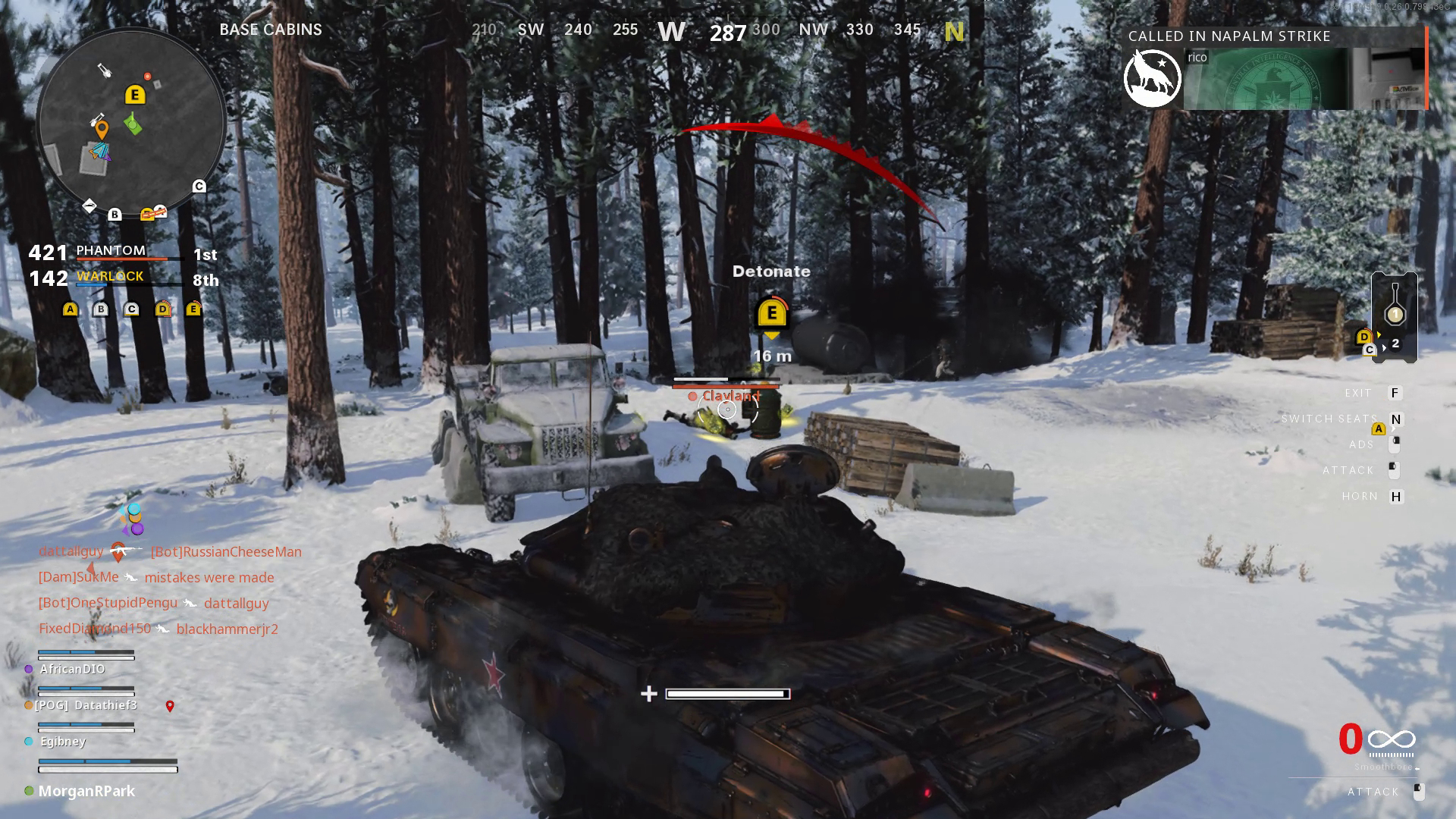
Southpaw
The granularity of Cold War’s settings cannot be overstated. There are graphical options for everything under the sun—this is the first raytraced game I’ve seen with separate values for raytraced sun shadows, local shadows, and ambient occlusion. I also played with Nvidia’s low latency Reflex mode (un-boosted), but didn’t notice any discernible difference when flicking to heads.
There’s also the absurdly specific “monitor distance coefficient” slider for standardizing mouse sensitivity across every zoom level. I’d never given my monitor’s coefficient a second thought, but I’ll never make that mistake again! For the rare controller player on PC, there’s a mile-long list of sliders to fine-tune stick acceleration and aim assist.
One semi-obscure missing piece is remappable controller configs, a basic accessibility feature in 2020. Unfortunately, Cold War sticks to the ancient tradition of preset controller mappings with silly names like “Charlie” and “One-handed Gunslinger” over fully remappable buttons. Speaking of accessibility, Cold War could do a lot better. We previously wrote about its elaborate colorblind modes, but other increasingly common features like text-to-voice haven’t made the cut. If Rainbow Six Siege can retrofit its dusty bones with proper accessibility five years later, a shiny new CoD should at least match it.
All the president’s men
At the launch of Cold War, Beenox’s PC port is already in a steadier place than 2019’s Modern Warfare. On my mid-tier PC (RTX 2060, Ryzen 5 2600 3.4GHz) running at 1080p, I had no problem keeping a steady 80-90 fps on high. Turning on raytracing dropped to an unsteady 60 fps, so I happily kept it off. A highlight is DLSS, which I kept on Quality mode and still improved my average performance. Unfortunately, those pretty shadows come at the price of shader installations that took me nearly 20 minutes on first boot. If Modern Warfare is any indication, similar installations will be required after every major patch, and even after swapping GPUs.
It’s almost impressive how close Call of Duty’s campaigns come to originality without ever actually changing. When it was first announced, I was hopeful that Cold War (the first campaign led by Raven Software) could be an opportunity to move past the helicopter crashes, turret sequences, and slow-motion door breaches that could fill a Call of Duty bingo card. Cold War still does literally all of that, but it’s not completely devoid of espionage.
One early mission, Brick in the Wall, is almost exclusively spent sneaking through the streets of East Berlin looking for a lead on the story’s villain, a deep-cover Soviet agent codenamed Perseus. In this one mission, Cold War flirts with a bunch of un-Call-of-Duty things like enemy tagging, stealth takedowns, and even a Fallout-style lockpicking minigame. It’s pretty darn cool! But it’s over in minutes, just in time for a bombastic firefight. A late-game level in Moscow follows a similar arc. What begins as a neat Hitman-lite infiltration of the KGB headquarters eventually descends into another obligatory wave-based gunfight.
So much of the campaign’s best qualities are under-explored or fleeting. Between missions, you can have optional conversations with allies complete with branching dialogue trees. They’re an enjoyable way to learn a bit more about characters, but too short. The same goes for the story’s two inconsequential side missions, one of which repurposes a multiplayer map. These were a particular bummer because the way you unlock them is so cool. Technically, both missions are playable early in the story, but you’re encouraged to prepare for them by unlocking additional intel through puzzles. The solutions can only be found by combing through main missions for intel. The code cipher to an encrypted floppy disk, for instance, required a newspaper and audio recording acquired in different countries.
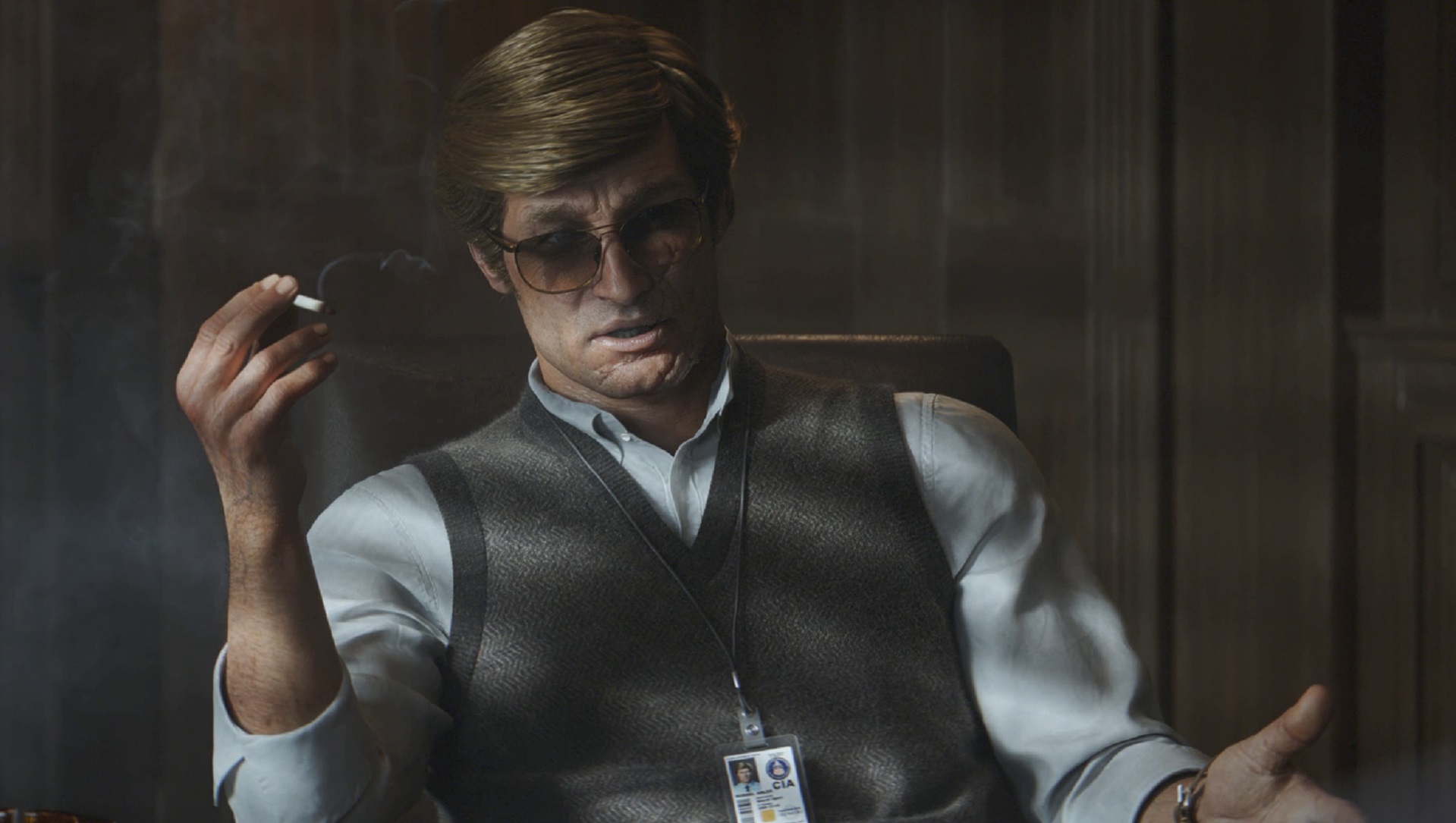
Cold War flirts with a bunch of un-Call-of-Duty things like enemy tagging, stealth takedowns, and even a Fallout-style lockpicking minigame.
Filling the gaps between Cold War’s interesting moments are largely forgettable missions furthering a perplexing plot that… just suddenly ends? I won’t say too much about the later twists, but I was sorely disappointed by its core revelations and the multiple endings they hinge on (which are so abrupt that they feel unfinished). For a story that kicks off with a freshly-inaugurated Ronald Reagan christening an illegal kill squad, the actual plot is surprisingly milquetoast.
Regarding the Reagan in the room (an exhausting phrase to utter in late 2020), his prominence in Cold War’s marketing doesn’t square with the single, very bad cutscene in which he appears. Watching the president at the center of the Iran-Contra affair, which funded war crimes, monologue about “thankless heroes” and “necessary measures” didn’t give me the patriotic goosebumps that I suspect Raven was going for when it was written. After all, this is the same series that hired Oliver North, one of the Iran-Contra scandal’s primary actors, to consult and appear in Black Ops 2.
Activision is in a confusing place with its proposed multi-CoD future. The publisher has its feet firmly planted in two camps—happy to update Warzone as a live service game, but still keeping a firm grasp on the annual release schedule. It’s trying to thread that needle by selling Cold War like it’s some sort of $60 Warzone expansion pack. It’s not, but it’s just as unnecessary. I’m curious to watch the next year unfold as two conflicting shooters intertwine (at least until whatever’s next). Who would’ve thought that Call of Duty’s biggest competition would be itself? Video games are weird that way.
- Black Ops Cold War floppy disk code: How to get it
- Black Ops Cold War Red Circus suspects: Who to choose
- Black Ops Cold War evidence: How to find it all
- Black Ops Cold War prestige: How it works
Read our review policy
Cold War is an inessential distraction from the best Call of Duty on offer.


